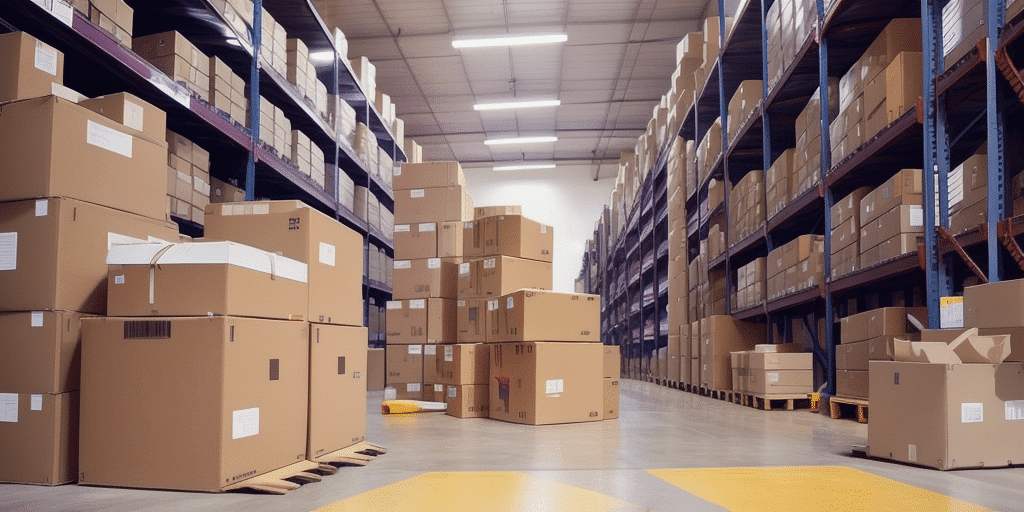Connecting FedEx with Priority ERP: An Overview
As an essential part of the supply chain, FedEx serves as a vital shipping solution that businesses rely on to deliver packages globally. Integrating FedEx with Priority ERP can streamline your shipping processes, reduce errors, and save time and money. In this article, we'll explore how to connect, optimize, and manage FedEx within Priority ERP, share best practices, and discuss future trends in shipping and logistics.
Understanding FedEx Integration with Priority ERP
The Significance of FedEx in Modern Supply Chains
FedEx is a leading shipping carrier with over 40 years of experience in delivering reliable services globally. Its extensive logistics network and diverse shipping options make it an ideal solution for businesses of all sizes.
Benefits of Integrating FedEx with Priority ERP
By integrating FedEx with Priority ERP, businesses can:
- Access real-time shipping and tracking information, improving visibility across the supply chain.
- Automate shipping processes, reducing manual workload and minimizing errors.
- Leverage FedEx's diverse shipping options, including overnight and international shipping, to meet varied customer needs.
- Generate shipping labels and track packages seamlessly from a single platform, enhancing operational efficiency.
This integration not only saves time but also boosts customer satisfaction by providing accurate and timely delivery information.
Connecting FedEx to Priority ERP: Step-by-Step Guide
Integrating FedEx with Priority ERP involves several key steps to ensure a seamless connection:
- Step 1: Install the FedEx Ship Manager software.
- Step 2: Create a FedEx account.
- Step 3: Obtain your FedEx credentials, including API keys and account details.
- Step 4: Configure your FedEx credentials within the Priority ERP system.
- Step 5: Set up your shipping preferences, such as default shipping methods and packaging options.
- Step 6: Begin shipping with FedEx through Priority ERP.
Ensure that your system meets the minimum requirements for the FedEx Ship Manager software, including a compatible operating system, sufficient memory and disk space, and a stable internet connection.
Once connected, you can utilize features such as real-time tracking, automatic rate calculation, and streamlined label printing, enhancing your shipping operations' efficiency and accuracy.
Optimizing and Maximizing FedEx Integration
Optimizing Integration for Business Needs
After connecting FedEx to Priority ERP, it’s essential to tailor the integration to fit your specific business requirements:
- Create custom shipping rules based on package weight, destination, and delivery time to automate decision-making.
- Enable automatic shipping label printing to speed up the fulfillment process.
- Integrate with other shipping carriers to compare rates and choose the most cost-effective options.
Additionally, utilize FedEx's advanced tracking features within Priority ERP to monitor shipments in real-time and receive notifications for any delays or issues. Leveraging FedEx's reporting tools allows you to analyze shipping data, such as delivery times and costs, facilitating data-driven decisions that optimize your shipping processes.
Maximizing Shipping Efficiency
To maximize your shipping efficiency with FedEx and Priority ERP:
- Choose cost-effective shipping options that balance speed and price.
- Consolidate shipments by sending packages to multiple destinations in a single shipment when possible.
- Streamline label creation by automating shipping label generation to reduce manual errors.
- Leverage real-time tracking to keep tabs on shipment statuses and proactively address any issues.
Furthermore, utilize FedEx's automated shipping solutions to minimize manual tasks, such as label printing and customs documentation, thereby reducing the likelihood of errors and delays.
Managing FedEx Shipments with Priority ERP
Shipment Tracking and Reporting
Managing FedEx shipments within Priority ERP allows you to:
- Track shipments in real-time, viewing their current status and estimated delivery times.
- Create comprehensive shipping reports to analyze key performance metrics.
- Manage shipping documents efficiently, reducing the need for manual data entry.
These capabilities provide greater visibility and control over your shipping operations, enabling proactive management of any potential issues.
Reducing Shipping Costs
Implementing strategies to reduce shipping costs can significantly impact your bottom line:
- Utilize FedEx's discounted rates available for high-volume shippers.
- Select the most cost-effective shipping options based on package size, weight, and destination.
- Compare rates between different carriers to ensure you’re getting the best deal.
Additionally, optimizing your packaging by using the smallest possible boxes or envelopes that still protect your products can reduce dimensional weight charges. Consider eco-friendly packaging materials not only for cost savings but also to promote sustainability within your business.
Overcoming Integration Challenges and Best Practices
Common Integration Challenges
When integrating FedEx with Priority ERP, you might encounter several challenges:
- Incorrect or missing data in shipping documents, leading to delivery delays.
- Difficulties in configuring shipping rules and preferences to match business needs.
- Errors during shipping label printing, which can disrupt the fulfillment process.
Additionally, the absence of real-time tracking information can impede shipment management and inventory control. Working with an experienced ERP consultant can help you navigate and resolve these challenges effectively.
Best Practices for Seamless Integration
To maintain a smooth FedEx-ERP integration:
- Regularly update shipping rules and preferences to align with your evolving business requirements.
- Monitor shipping costs and adjust methods as necessary to maintain cost efficiency.
- Train employees on best practices for using FedEx and Priority ERP to ensure consistent and accurate shipping processes.
- Perform regular integration tests to identify and fix any issues proactively.
- Stay informed about updates or changes to FedEx and Priority ERP systems to leverage new features and maintain security.
Following these best practices ensures that your integration remains effective and continues to support your business operations.
Future Trends in Shipping and Logistics
The shipping and logistics industry is continually evolving, driven by technological advancements and changing consumer expectations. Here are some key trends to watch:
- Autonomous Vehicles and Drones: The use of autonomous vehicles and drones for deliveries is increasing, offering faster and more efficient shipping options.
- Artificial Intelligence and Machine Learning: AI and machine learning are being leveraged to optimize route planning, predict delivery times, and enhance inventory management.
- Real-Time Tracking and Customer Updates: Enhanced tracking technologies provide customers with real-time updates on their shipments, improving transparency and satisfaction.
- Blockchain Technology: Blockchain offers a secure and transparent method for tracking and verifying transactions within the supply chain, reducing fraud and increasing traceability.
Incorporating these trends into your FedEx-ERP integration can help your business stay competitive and meet the evolving demands of your customers.
Conclusion: Achieving Seamless Connectivity between FedEx and Priority ERP
Integrating FedEx with Priority ERP streamlines your shipping processes, minimizes errors, and saves both time and money. By understanding the significance of FedEx as a shipping solution, following a systematic approach to connect and optimize the integration, and adhering to best practices, you can ensure seamless connectivity between FedEx and your ERP system.
Embracing future trends such as autonomous delivery and AI-driven logistics will further enhance your shipping operations. While the integration process may require an initial investment in time and resources, the long-term benefits—including improved customer service, reduced operational costs, and increased efficiency—make it a worthwhile endeavor.
By leveraging the capabilities of FedEx and Priority ERP, your business can achieve a competitive edge in the market and position itself for sustained success in the ever-evolving logistics landscape.






















